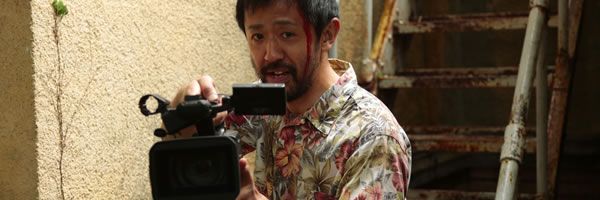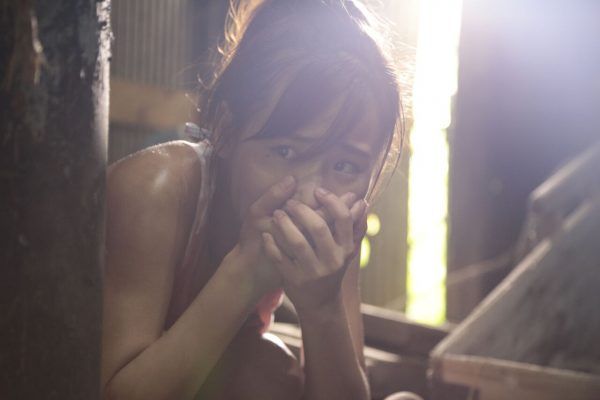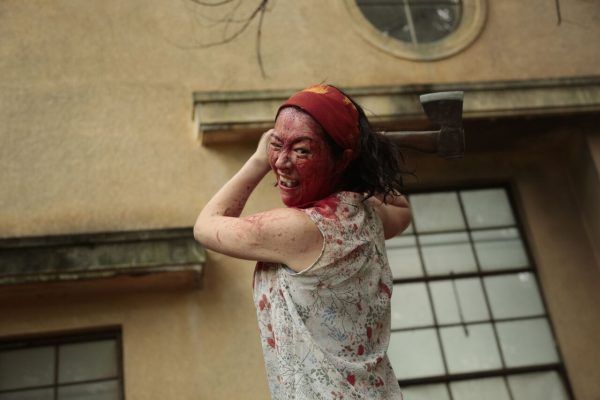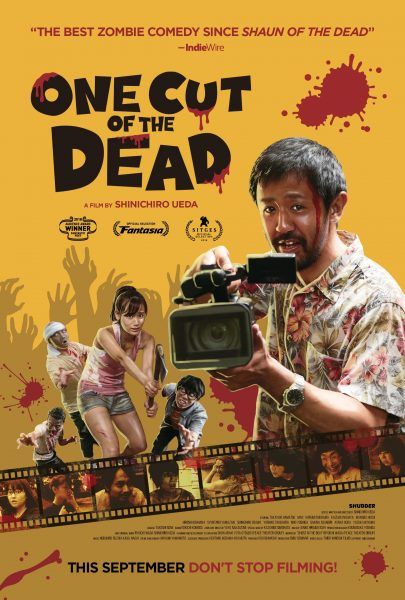[One Cut of the Dead plays theatrically nationwide for one night only on September 17th. Click here to get tickets.]
If you’ve avoided reading reviews like this before seeing One Cut of the Dead, you’re on the right track. Stick with that instinct. If you’re on the fence about seeing One Cut of the Dead, see it and stop reading this review (please come back after you’ve seen the movie!). I don’t like writing reviews like this when if I tell you why the film works I’ve spoiled the film, but here we are. So I’m going to tell you as much as I can about One Cut of the Dead and then I’ll put up a spoiler warning at which point, if you have not seen the movie, stop reading. You will enjoy this movie so much more if you don’t know what’s coming because One Cut of the Dead is far from your average zombie film.
The first act of One Cut of the Dead is a 37-minute unbroken take where a filmmaking crew is making a zombie movie. The tyrannical director (Takayuki Hamatsu) isn’t getting the performance he wants from his lead actress Chinatsu (Yuzuki Akiyama), and everyone is getting very tired. It also turns out that the deserted location where they’re filming supposedly used to have top-secret military experiments where they worked to raise the dead. The crew’s fake zombie film then becomes real when zombies attack and the small crew tries to escape from their co-workers who have joined the ranks of the undead.
Spoilers ahead. Seriously, if you haven’t seen the movie yet, stop reading.
As you know from seeing the film, the big twist is that the first act was always just a movie. There are no zombies in One Cut of the Dead. Instead, what makes the film so good is that it’s a movie about moviemaking. The real struggle is the director, Higurashi, taking a job and being hired because he’s just a journeyman who puts commerce before art. However, when it’s time to do the live broadcast, unforeseen consequences force everyone to improvise on the job.
One Cut of the Dead isn’t just immensely entertaining with good gags and endearing characters. It’s a lesson for the audience that assumes everything on a film went as intended. When you get to the third act and go “behind-the-scenes” of the zombie film, you see how many things went wrong. But you never really noticed they went wrong during the first act of the film when you assumed One Cut of the Dead was just a regular zombie movie. As a viewer, we give the artist the benefit of intentionality. We can’t know what was an accident and what was purposeful since no one has a full accounting of every department’s behavior on a production, so we can only look at the end result. The “why” of a decision remains a mystery as we simply observe the “what.”
What writer-director Shin'ichirô Ueda (and anyone who has worked on a movie before) understands is that nothing runs perfectly. Sure, there are places to clean things up, and the story within the story of One Cut of the Dead has the distinction of being done live so there’s no way to edit around problems or do reshoots, but ultimately, sometimes in performance art, you have to improvise. And like any good magician, as long as the audience doesn’t figure out what’s happening, the trick works.
Ueda also understands that filmmaking in particular is a collaborative art form. What makes the third act of the film so rewarding is seeing how the entire production bands together to keep the show rolling. While filmmaking is seen as territory for divas, in reality, the real magic happens when people set aside ego, do their jobs, and all work together to complete a common goal. There’s no such thing as a one-man show in filmmaking short of a lone individual in a room doing stop-motion animation. Watching the characters do a human pyramid just to get their closing “crane shot” after the real crane accidentally gets destroyed is one of my favorite moments in film this year because it beautifully shows the power of collaborating for an artistic vision.
If you walked into One Cut of the Dead just wanting a zombie movie, you might have been disappointed because, as you now know, there are no zombies. It’s a movie about movies, and while I mean no offense to the zombie genre and the stories it can tell, I love what Ueda has done here. He has used a zombie short film as a springboard for a stronger story about how we perceive art versus how it’s actually created. If One Cut of the Dead were just a zombie film where they did it in a single take that would be all well and good. Instead, it’s one of the best movies of the year.
Rating: A




